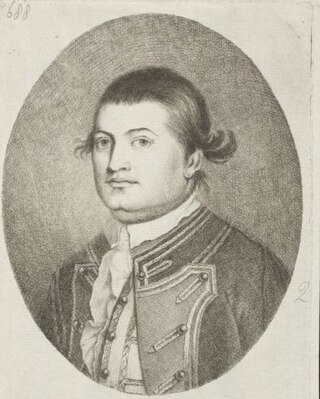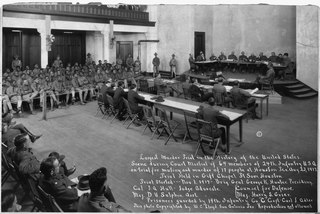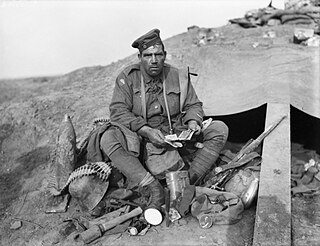Casula is a suburb of Sydney, in the state of New South Wales, Australia. It is 34 kilometres south-west of the Sydney central business district, in the local government area of the City of Liverpool.

The Sydney central business district (CBD) is the historical and main commercial centre of Sydney. The CBD is Sydney's city centre, or Sydney City, and the two terms are used interchangeably. Colloquially, the CBD or city centre is often referred to simply as "Town" or "the City". The Sydney city centre extends southwards for about 3 km (2 mi) from Sydney Cove, the point of first European settlement in which the Sydney region was initially established.

The War Precautions Act 1914 was an Act of the Parliament of Australia which gave the Government of Australia special powers for the duration of World War I and for six months afterwards.

Lieutenant-General Francis Grose was a British soldier who commanded the New South Wales Corps. As Lieutenant Governor of New South Wales he governed the colony from 1792 until 1794, in which he established military rule, abolished civil courts, and made generous land-grants to his officers. He failed to stamp out the practice of paying wages in alcoholic spirits, with consequent public drunkenness and corruption. Although he helped to improve living conditions to some degree, he was not viewed as a successful administrator.
Edmondson Park is a suburb in the South West of Sydney, in the state of New South Wales, Australia. Edmondson Park is located 32 kilometres from the Sydney central business district, in the local government area of the City of Liverpool.

The six o'clock swill was an Australian and New Zealand slang term for the last-minute rush to buy drinks at a hotel bar before it closed. During a large part of the 20th century, most Australian and New Zealand hotels shut their public bars at 6 pm. A culture of heavy drinking developed during the time between finishing work at 5 pm and the mandatory closing time only an hour later.

The Houston race riot of 1917, also known as the Camp Logan Mutiny, was a mutiny and riot by 156 soldiers from the all-black 24th Infantry Regiment of the United States Army, taking place on August 23, 1917, in Houston, Texas. The incident occurred within a climate of overt hostility from members of the all-white Houston Police Department (HPD) against members of the local black community and black soldiers stationed at Camp Logan. Following an incident where police officers arrested and assaulted some black soldiers, many of their comrades mutinied and marched to Houston, where they opened fire and killed eleven civilians and five policemen. Five soldiers were also killed, some by friendly fire.

During World War I, recruitment marches or snowball marches to state capital cities were a feature of volunteer recruiting drives for the Australian Imperial Force in rural Australia. Between October 1915 and February 1916, nine marches were held starting from various points in the state; the most notable was the first march from Gilgandra, New South Wales, known as the Cooee march. The March of the Dungarees took place in south-eastern Queensland in November 1915. In 1918, in an effort to promote recruitment, another march was staged, but this was less spontaneous and the marchers in fact travelled by train.
The following lists events that happened during 1916 in Australia.

Brigadier General John Patrick McGlinn, was an Australian public servant and a senior officer of the Australian Army during the First World War.
Alcohol laws of Australia are laws that regulate the sale and consumption of alcoholic beverages. The legal drinking age is 18 throughout Australia. The minimum age for the purchase of alcoholic products in Australia is 18. A licence is required to produce or sell alcohol.

John "Barney" Hines (1878–1958) was a British-born Australian soldier of World War I, known for his prowess at taking items from German soldiers. Hines was the subject of a famous photo taken by Frank Hurley that depicted him surrounded by German military equipment and money he had looted during the Battle of Polygon Wood in September 1917. This image is among the best-known Australian photographs of the war.

Major-General James Alexander Kenneth Mackay,, usually known as Kenneth Mackay, was an Australian soldier and politician.

The New South Wales Mounted Police Unit is a mounted section of the New South Wales Police Force. Founded by Governor Sir Thomas Brisbane on 7 September 1825, the Mounted Police were recruited from the 3rd Regiment of Foot, stationed in NSW at the time, to protect travellers, recaptured escaped convicts and supress Indigenous resistance to colonisation. The force remained the mounted division of the colonial forces of Australia in the colony of New South Wales until 1850, when it took on a more civilian role. The NSW Mounted Police Unit is the oldest continuous mounted group in the world.

Casula Powerhouse Arts Centre (CPAC), commonly referred to as Casula Powerhouse, is a multi-disciplinary arts centre in Casula, a south-western outer suburb of Sydney, New South Wales, Australia. Before being renovated and converted into an arts centre, the building was known as Liverpool Powerhouse. Since 2016 CPAC has hosted the Blake Prizes, comprising two art prizes and a residency, as well as the Blake Poetry Prize.
A referendum concerning the closing hour for licensed premises and registered clubs was put to voters on 10 June 1916. The referendum was conducted on the basis of optional preferential voting. Preferences were not counted as a majority voted for 6:00 pm closing time.
A referendum concerning the closing hour for licensed premises and registered clubs was put to voters on 15 February 1947. The referendum was conducted on the basis of optional preferential voting. Preferences were not counted as a majority voted to maintain the 6:00 pm closing time.
A referendum concerning the closing hour for licensed premises and registered clubs was put to voters in New South Wales on 13 November 1954.
A referendum concerning introducing prohibition in New South Wales was put to voters on 1 September 1928.
A referendum concerning whether hotels should be allowed to trade on Sundays was put to voters in New South Wales on 29 November 1969 but was unsuccessful.












